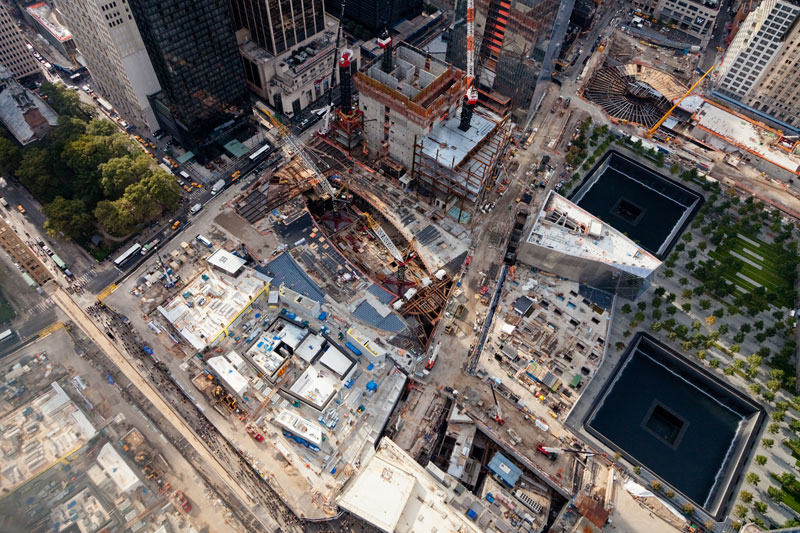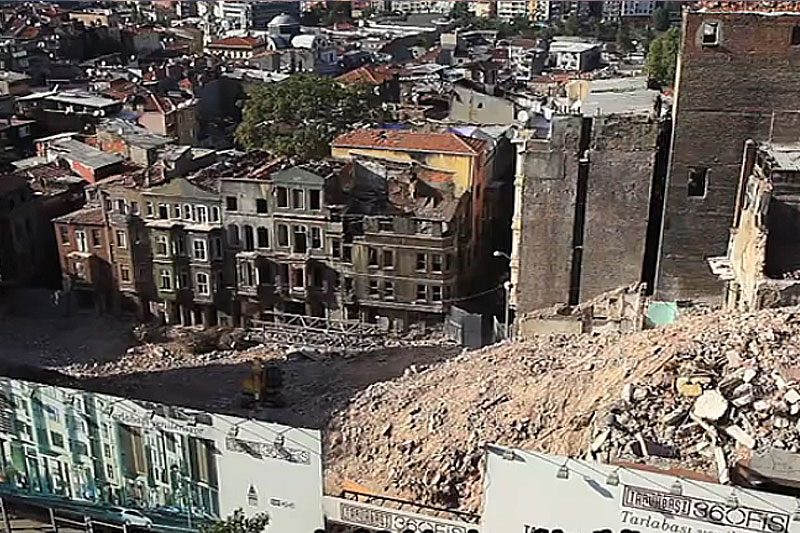
Gábor Fehér
Film: 16 Acres (Richard Hankin, 2012, 95’)
Thursday March 6 – 19:00
What was the reason that public involvement could not succeed? What kind of personal and political interests slowed down progress? What was the reason that an architectural competition could not be enough? Why would we think at all it’s an architectural question per se? Why is the Ground Zero so different than any other site with the same parameters around the globe? Richard Hankin’s film rounds up the events, conflicts, and, of course, the emotions, which accompanied the much-needed answer to 9/11. It was evident that after the terrorist attacks not only a physical but also an intellectual and emotional void took over the site of the twin towers. And, in fact, it did matter whether they stick with a built solution, an iconic building or the absence of the site becomes the sign of remembrance. After the initial expectations of the top figures of New York and the participative attempts have failed, only an architectural competition could possibly offer an adequate answer.
Or could it? There were star architects everywhere, though. The prominent mega company named LMDC had chosen Rafael Viñoly, but governor Pataki wanted none of that, so he declared Daniel Libeskind as a winner instead. A futile attempt on his part as real estate investor Larry Silverstein wanted his own architect, David Childs in the position, saying Libeskind had not built a skyscraper before and, after all, that is not the opportunity for him to start experimenting on his money. Amidst the real power play, the prestige battles and bidding on each other the umpteenth nominee, Michael Arad had had the chance to be green lit in the side tracks – instead, after their initial support, the families spent a whole night protesting in the cold. And when everything had seemed to correlate, the insanely expensive transportation hub in the nearby, designed by Santiago Calatrava, almost bled the WTC project completely out. In the end, buildings of Richard Rogers, Norman Foster and Fumihiko Maki were erected, girdling the memorial around.
While there were an abundance of promises and solemn speeches during the whole ten years, the initial optimism was being replaced by scepticism and a growing number of questions. What is going to be built, who is going to build it, what are the costs going to be and most importantly, when is it going to be finished? Battles between Silverstein and the authorities broke out, families were stepped over by the decision-makers or just a crucial letter went missing. And when the cornerstone had been laid, the plan of the tower to be erected needed a complete makeover at a new site. Anyway, it’s a typical case where not the end, rather the path matters. And that’s an emotional rollercoaster filled with schemes, irony and mourning. That’s what 16 acres is about.
